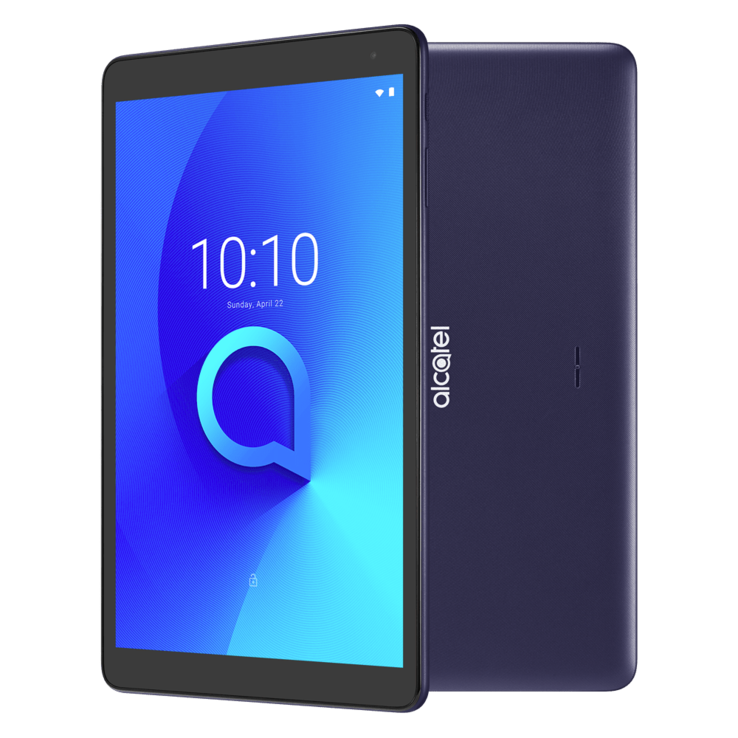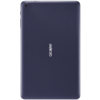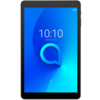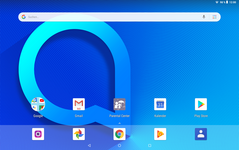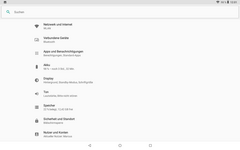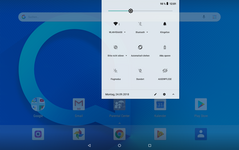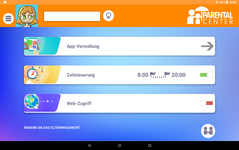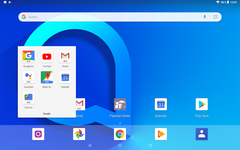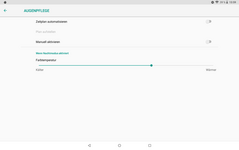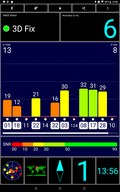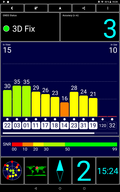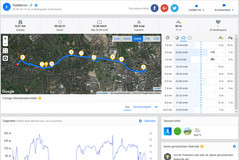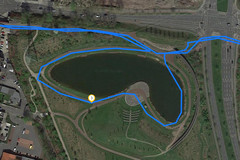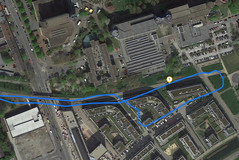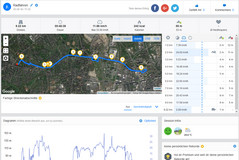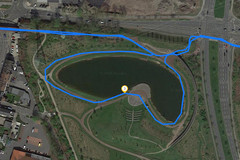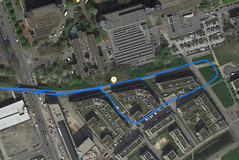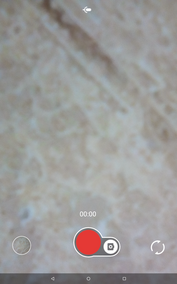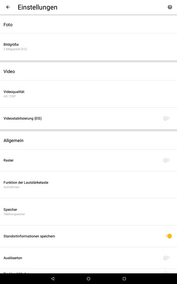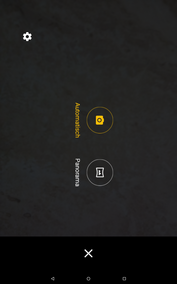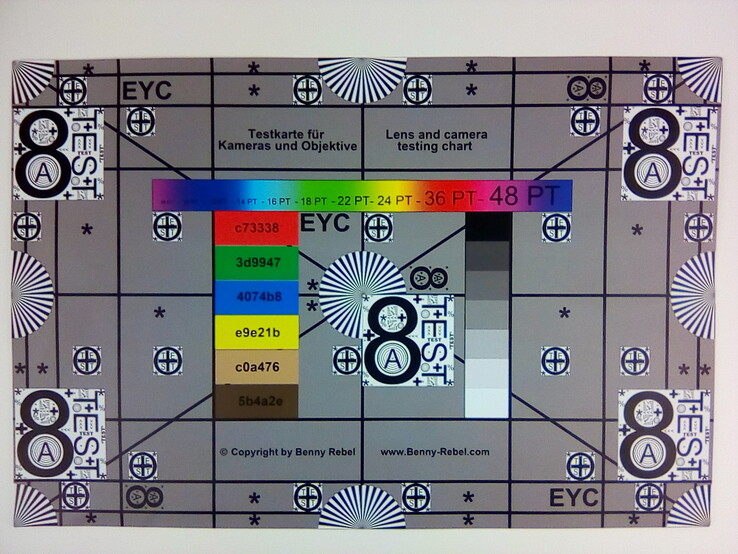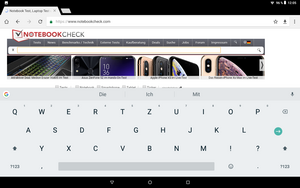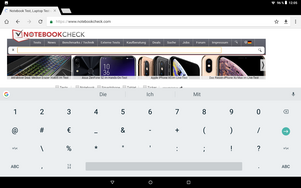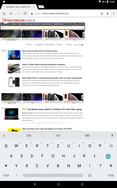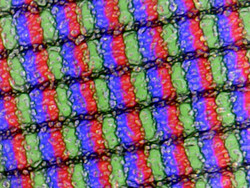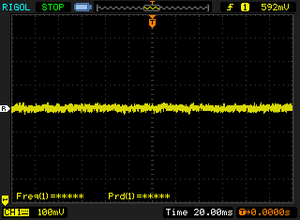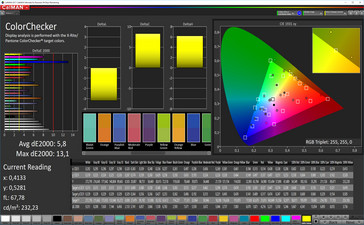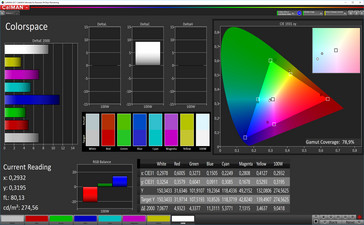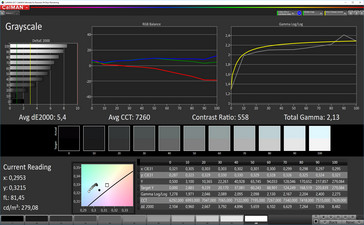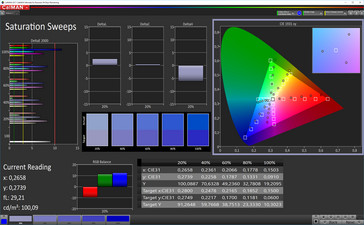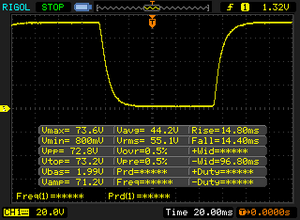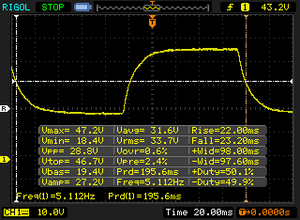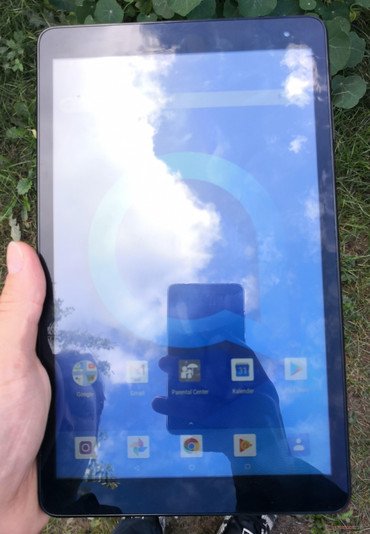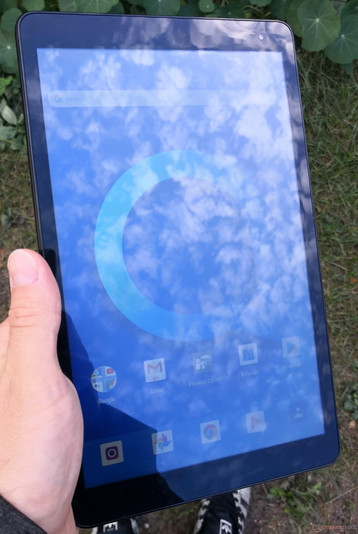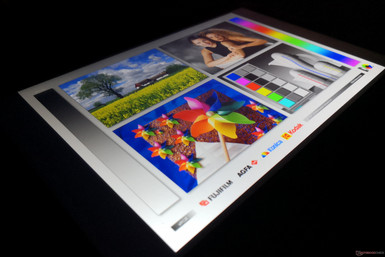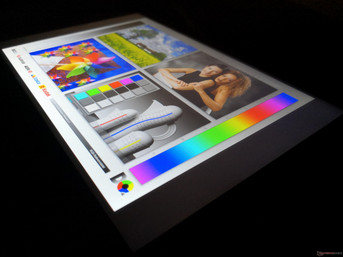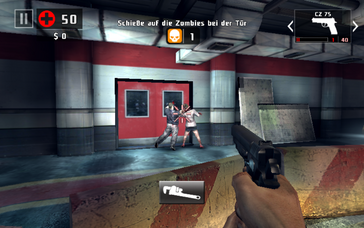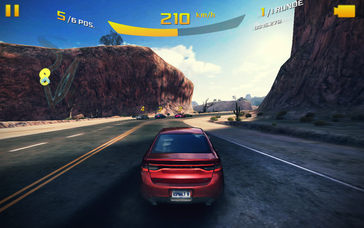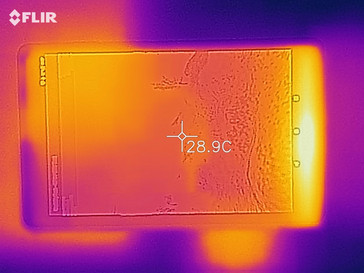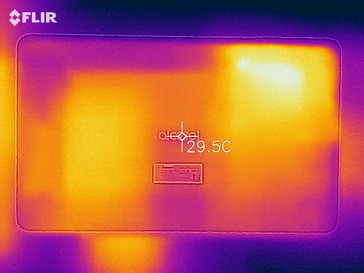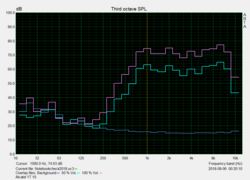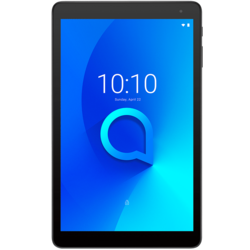Alcatel 1T 10 Tablet Review
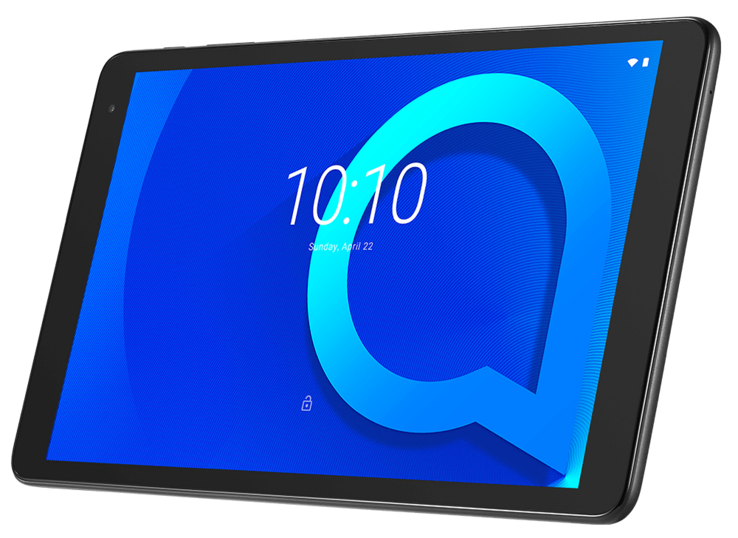
The Alcatel smartphone company, which is now part of the Chinese electronics manufacturer TCL Corporation at this point, already showed two new tablets at this year's Mobile World Congress 2018 in Barcelona – one of them being the 1T 10 that has a display diagonal measuring 10.1 inches.
A particularity of the 1T 10 is the operating system used. In its tablet that costs 100 Euros (~$115) Alcatel does not use its own user interface but uses the Go Edition of Android Oreo. This version of Google's operating system, which is designed for low-end devices with low-performance hardware, offers particular apps and system services and is optimized for low resource usage.
Correspondingly, the 1T 10 also offers low storage capacities (1 GB RAM, 16 GB ROM) and low processor performance, particularly since the MediaTek SoC used in the Alcatel tablet comes from 2016 and thus does not appear quite current anymore. The other hardware also corresponds to its price range. The 10-inch tablet has an IPS panel with a resolution of 1280x800 pixels and a 4000 mAh battery.
The number of 10-inch tablet competitors for the Alcatel 1T 10 is limited. While we see the Amazon Fire HD 10 2017 as one of the main competitors in the price range around 100 Euros (~$115), the affordable mid-range devices Medion Lifetab P10606 and Lenovo Tab 4 10 are also some possible alternatives and are included in our comparison models.
Case - Alcatel tablet not very resistant to warping
In terms of the color options of the plastic case, you can select either black or blue. The bezels around the 10-inch display are relatively large, which is reflected in the display-to-surface ratio of only 75%.
The slightly textured surface on the back hides fingerprints fairly well, but it is very slippery and offers little grip. In addition, the plastic used is very susceptible to scratches. Our test unit already had two deep scratches after only a few days of use, even though we hardly placed the device on any hard surfaces. The back also appears very thin and can be pushed in relatively far.
You also have to lower your sights in terms of the stability of the Alcatel tablet. Even some slight attempts at warping it without using much force result in visible changes of the display content (wave forming on the panel). On the other hand, the volume and power keys sit tightly in their frame on the right side of the case without hardly any wobble. But their pressure points are not well defined.
The workmanship is at an acceptable level overall. However, the Alcatel 1T 10 does not communicate a high value at any time.
Equipment - 1T 10 buyers have to make do without a fingerprint sensor
The equipment of the 1T 10 includes a status LED, an FM radio, and the classic 3.5 mm audio port. Wireless transfer of display content onto external monitors is also supported and worked without any problems in our test with a Sony Android TV. The list of equipment does not include biometric identification to unlock the tablet. Overall, the sensors built into the 1T 10 are reduced to a minimum, and there is only an acceleration sensor.
The microUSB connection with a USB 2.0 specification at the bottom of the case not only serves to charge the tablet or for data transfer, but it also supports OTG (On-the-Go) and you can connect peripheral devices to the 1T 10 via an OTG adapter.
The built-in eMMC storage offers 16 GB, with less than 10 GB of that available to the user after the initial startup. However, you can expand this by up to 128 GB via an inserted microSD card. While the exFAT file system is not supported, you can integrate formatted microSD cards into the system as internal storage.
Software - Stock Android thanks to Go Edition
The 1T 10 is delivered with the Go Edition of Google's Android 8.1 Oreo operating system. In contrast to Google's Android-One program, the Go Edition does not necessarily include any guarantee of regular operating system or security updates. The security patches of our test unit were updated last in May 2018.
We do not need to say much about the user interface in Android-Go devices – it is a pure Google operating system. However, some apps have been "optimized" for low storage capacities. For example, the Go version of Google Maps is more of a browser link than its own app. There is also an adapted version of the Google Play Store that favors apps that are less resource-hungry.
In addition, Alcatel has also installed some in-house software solutions on its affordable entry-level tablet such as the "Parental Center" allowing you to set up app usage limits (for children) among other things.
Communication and GPS - Alcatel tablet with weak WLAN
Bluetooth version 4.2 is available for wireless communication – there is no NFC chip. The integrated WLAN module of the Alcatel 1T 10 masters the IEEE-802.11 b/g/n standard, so it only works in the 2.4-GHz frequency range. The Wi-Fi transfer speed between the affordable tablet and our Linksys EA 8500 reference router remains at a correspondingly meager level, even for an entry-level device. In addition, the dampening close to the router is a bit high at almost -42 dBm.
One possible usage area for a tablet is for making video calls. We examine the voice quality of the built-in microphone using the Skype app we installed. The voice quality of the 1T 10 is distorted and not loud enough overall. Our conversation partners are also hard to understand, since the sound reproduction of the mono speaker adds an echo to the voices making them hard to understand.
| Networking | |
| iperf3 transmit AX12 | |
| Huawei MediaPad M5 10.8 Pro | |
| Amazon Fire HD 10 2017 | |
| Medion Lifetab P10606 | |
| Lenovo Tab 4 10 | |
| Alcatel 1T 10 | |
| iperf3 receive AX12 | |
| Medion Lifetab P10606 | |
| Amazon Fire HD 10 2017 | |
| Huawei MediaPad M5 10.8 Pro | |
| Lenovo Tab 4 10 | |
| Alcatel 1T 10 | |
The Alcatel 1T 10 only uses the GPS satellite network to determine its location. While the locating outdoors can score with a good accuracy, it takes a very long time – several minutes at times. The entry-level device can also locate us indoors, but this is extremely time-consuming as well.
In addition, we evaluate the accuracy on an almost 10-km bike ride (~6.2 miles) and compare the results with the professional Garmin navigation device. In the end, the difference between the recorded route of the Alcatel tablet and the Garmin Edge 500 is only 50 meters, which is a good value that even some current high-end smartphones are unable to achieve.
Even in a more detailed analysis of the route, we hardly find any real outliers. So navigation by bike or car is quite possible with the 1T 10, as long as the GPS module can create a satellite connection.
Cameras - Not really suitable for everyday use
For the camera in the back, Alcatel uses a 2 MP camera with an f/2.8 aperture. According to the spec sheet, images taken with the 1T 10 are supposed to be interpolated up to 5 MP. However, in our test unit the images remain at the standard resolution of 1200x1600. Nothing is known about the selection of the image sensor.
In terms of the quality of the images taken by the Alcatel tablet, a lot remains to be desired. Neither the color reproduction and white balance nor the image sharpness are convincing. Even under good light conditions, the images appear blurry and poor in contrast, and we can also see a clear red tint. The built-in aperture is too weak for a good low-light performance, and the pictures are correspondingly dark and full of image noise.
The camera at the front also has an f/2.8 aperture and a 2 MP resolution. The quality of the images is neither good during daylight nor with increasing darkness. Although both cameras have the same resolution, the front camera only records videos in 480p at 30 fps. If you use the camera at the back, the resolution of the recording increases to 1080p, although the quality is not really good in Full HD either.
Accessories and Warranty - 1T 10 without surprises
The delivery contents include a modular 5-Watt charger (5V, 1A), a USB cable, and some information booklets.
The manufacturer offers a warranty of 24 months from the time of purchase for the tablet. Please see our Guarantees, Return policies and Warranties FAQ for country-specific information.
Input Devices and Operation - The Alcatel tablet has weaknesses
Navigation occurs via the Android on-screen keys for "Back," "Multitasking," and "Home." The capacitive multi-touchscreen of the Alcatel tablet responds to input with up to 10 fingers. Since the display of the 1T 10 is not laminated – at least as far as we can tell – there is a small air gap between the touch panel and the display, so the input is not always exact. The response times are also relatively high.
There is no unlocking via biometric identification in the Alcatel 1T 10. Google's Gboard is preinstalled as the default keyboard.
Display - The IPS panel is too dark
The Alcatel 1T 10 is equipped with a 10.1-inch IPS display in the 16:10 format that has a resolution of 1280x800 pixels. The achieved pixel density of barely 150 PPI is not high, so that you can see separate pixels in everyday use and small text appears blurry accordingly. In terms of image sharpness, the Amazon Fire HD 10 2017 has a much higher-resolution display.
The display achieves a maximum brightness of only 277 cd/m². In the more realistic APL50 measurement, which simulates an even distribution of bright and dark areas on the panel, it is an almost identical 274 cd/m². The tablet does not have an environment light sensor.
| |||||||||||||||||||||||||
Brightness Distribution: 87 %
Center on Battery: 277 cd/m²
Contrast: 565:1 (Black: 0.49 cd/m²)
ΔE ColorChecker Calman: 5.8 | ∀{0.5-29.43 Ø4.78}
ΔE Greyscale Calman: 5.4 | ∀{0.09-98 Ø5}
78.9% sRGB (Calman 2D)
Gamma: 2.13
CCT: 7260 K
| Alcatel 1T 10 IPS, 1280x800, 10.1" | Lenovo Tab 4 10 IPS, 1280x800, 10.1" | Amazon Fire HD 10 2017 IPS, 1920x1200, 10.1" | Medion Lifetab P10606 IPS, 1920x1200, 10.1" | Huawei MediaPad M5 10.8 Pro IPS, 2560x1600, 10.8" | |
|---|---|---|---|---|---|
| Screen | 39% | 37% | -22% | -7% | |
| Brightness middle (cd/m²) | 277 | 316 14% | 426 54% | 326 18% | 384 39% |
| Brightness (cd/m²) | 263 | 305 16% | 399 52% | 338 29% | 360 37% |
| Brightness Distribution (%) | 87 | 86 -1% | 91 5% | 92 6% | 84 -3% |
| Black Level * (cd/m²) | 0.49 | 0.2 59% | 0.38 22% | 0.56 -14% | 0.8 -63% |
| Contrast (:1) | 565 | 1580 180% | 1121 98% | 582 3% | 480 -15% |
| Colorchecker dE 2000 * | 5.8 | 5 14% | 4.5 22% | 9.1 -57% | 6.83 -18% |
| Colorchecker dE 2000 max. * | 13.1 | 8.7 34% | 7.9 40% | 18.2 -39% | 12.7 3% |
| Greyscale dE 2000 * | 5.4 | 5.7 -6% | 5.2 4% | 12 -122% | 7.5 -39% |
| Gamma | 2.13 103% | 2.25 98% | 2.23 99% | 2.32 95% | 2.199 100% |
| CCT | 7260 90% | 7921 82% | 6875 95% | 11359 57% | 8544 76% |
* ... smaller is better
Screen Flickering / PWM (Pulse-Width Modulation)
| Screen flickering / PWM not detected | |||
In comparison: 53 % of all tested devices do not use PWM to dim the display. If PWM was detected, an average of 8149 (minimum: 5 - maximum: 343500) Hz was measured. | |||
The rather mixed impression of the display continues with a high black value of 0.49 cd/m² (APL 50: 0.50 cd/m²), resulting in the low contrast of 1:565. The color temperature (7300 K) is also significantly above the ideal value (6500K), leading to a slight turquoise tint in the display content. The color accuracy and the accuracy of the Grayscale displayed are quite attractive for the price range. The IPS panel shows relatively little DeltaE deviations here. On the other hand, the sRGB color-space coverage is not so good.
Display Response Times
| ↔ Response Time Black to White | ||
|---|---|---|
| 29.2 ms ... rise ↗ and fall ↘ combined | ↗ 14.8 ms rise | |
| ↘ 14.4 ms fall | ||
| The screen shows relatively slow response rates in our tests and may be too slow for gamers. In comparison, all tested devices range from 0.1 (minimum) to 240 (maximum) ms. » 77 % of all devices are better. This means that the measured response time is worse than the average of all tested devices (20.3 ms). | ||
| ↔ Response Time 50% Grey to 80% Grey | ||
| 45.2 ms ... rise ↗ and fall ↘ combined | ↗ 22 ms rise | |
| ↘ 23.2 ms fall | ||
| The screen shows slow response rates in our tests and will be unsatisfactory for gamers. In comparison, all tested devices range from 0.165 (minimum) to 636 (maximum) ms. » 77 % of all devices are better. This means that the measured response time is worse than the average of all tested devices (31.7 ms). | ||
The low contrast ratio of 1:565 results in difficulties reading the display outdoors. In direct sunlight, the content cannot be recognized and the panel reaches its limits due to the low maximum brightness. However, the brightness of the 1T 10 is sufficient for using it indoors.
Thanks to the liquid crystal display with In-Plane-Switching (IPS) technology, content is reproduced with relatively good color accuracy even at very steep viewing angles. The viewing angles of the IPS panel in the Alcatel tablet are fairly stable, and there is only a slight reduction in brightness at steep viewing angles. We hardly noticed any color changes in the display either.
Performance - An old MediaTek SoC
The MediaTek SoC built into the 1T 10 was released in 2016. It has been manufactured in the 28-nm process and integrates four Cortex A7 processors. The MT8321 does not support 64 bits, it only supports 32 bits. It is accompanied by an ARM Mali 400 graphics card with a clock speed of up to 500 MHz.
Despite the efficient UI, the system performance of the Alcatel tablet is slow. There are repeated delays in everyday operation and stutters in multi-tasking that last for several seconds. Even switching from portrait into landscape mode is too much for the 1T 10, with the consequence of the selected background wallpaper turning black for a short time. Changing into Full Screen mode in the YouTube app can take longer than the five-second advertising before the video. Often apps such as Google Photos show no response after the system has been active for a while, making a restart necessary.
The benchmark results paint a similar picture as our impression during everyday usage. The MT8321 in combination with the 1 GB of RAM does not offer a competitive performance. Aside from a few exceptions, the Alcatel tablet always ends up being last in our comparison field.
| AnTuTu v6 - Total Score | |
| Huawei MediaPad M5 10.8 Pro | |
| Amazon Fire HD 10 2017 | |
| Medion Lifetab P10606 | |
| Lenovo Tab 4 10 | |
| Alcatel 1T 10 | |
| Average Mediatek MT8321 (n=1) | |
| AnTuTu v7 - Total Score | |
| Huawei MediaPad M5 10.8 Pro | |
| Amazon Fire HD 10 2017 | |
| Medion Lifetab P10606 | |
| Average Mediatek MT8321 (20856 - 21974, n=2) | |
| Alcatel 1T 10 | |
| PCMark for Android | |
| Work performance score | |
| Huawei MediaPad M5 10.8 Pro | |
| Amazon Fire HD 10 2017 | |
| Lenovo Tab 4 10 | |
| Medion Lifetab P10606 | |
| Average Mediatek MT8321 (2529 - 2719, n=2) | |
| Alcatel 1T 10 | |
| Work 2.0 performance score | |
| Huawei MediaPad M5 10.8 Pro | |
| Amazon Fire HD 10 2017 | |
| Medion Lifetab P10606 | |
| Lenovo Tab 4 10 | |
| Average Mediatek MT8321 (n=1) | |
| Geekbench 4.4 | |
| 64 Bit Single-Core Score | |
| Average of class Tablet (853 - 9867, n=15, last 2 years) | |
| Huawei MediaPad M5 10.8 Pro | |
| Amazon Fire HD 10 2017 | |
| Lenovo Tab 4 10 | |
| Medion Lifetab P10606 | |
| Average Mediatek MT8321 (429 - 431, n=2) | |
| Alcatel 1T 10 | |
| 64 Bit Multi-Core Score | |
| Average of class Tablet (2498 - 30983, n=15, last 2 years) | |
| Huawei MediaPad M5 10.8 Pro | |
| Amazon Fire HD 10 2017 | |
| Medion Lifetab P10606 | |
| Lenovo Tab 4 10 | |
| Average Mediatek MT8321 (1106 - 1127, n=2) | |
| Alcatel 1T 10 | |
| Compute RenderScript Score | |
| Average of class Tablet (2128 - 22243, n=8, last 2 years) | |
| Medion Lifetab P10606 | |
| Amazon Fire HD 10 2017 | |
| Lenovo Tab 4 10 | |
| Alcatel 1T 10 | |
| Average Mediatek MT8321 (840 - 862, n=2) | |
| GFXBench (DX / GLBenchmark) 2.7 | |
| T-Rex Onscreen | |
| Average of class Tablet (22 - 165, n=75, last 2 years) | |
| Huawei MediaPad M5 10.8 Pro | |
| Amazon Fire HD 10 2017 | |
| Medion Lifetab P10606 | |
| Lenovo Tab 4 10 | |
| Average Mediatek MT8321 (4.4 - 9.8, n=2) | |
| Alcatel 1T 10 | |
| 1920x1080 T-Rex Offscreen | |
| Average of class Tablet (20 - 886, n=75, last 2 years) | |
| Huawei MediaPad M5 10.8 Pro | |
| Amazon Fire HD 10 2017 | |
| Medion Lifetab P10606 | |
| Alcatel 1T 10 | |
| Lenovo Tab 4 10 | |
| Average Mediatek MT8321 (4.4 - 7.8, n=2) | |
| GFXBench 3.0 | |
| on screen Manhattan Onscreen OGL | |
| Average of class Tablet (14 - 165, n=75, last 2 years) | |
| Huawei MediaPad M5 10.8 Pro | |
| Amazon Fire HD 10 2017 | |
| Medion Lifetab P10606 | |
| Lenovo Tab 4 10 | |
| 1920x1080 1080p Manhattan Offscreen | |
| Average of class Tablet (12 - 532, n=75, last 2 years) | |
| Huawei MediaPad M5 10.8 Pro | |
| Amazon Fire HD 10 2017 | |
| Medion Lifetab P10606 | |
| Lenovo Tab 4 10 | |
| GFXBench 3.1 | |
| on screen Manhattan ES 3.1 Onscreen | |
| Average of class Tablet (8.8 - 160, n=75, last 2 years) | |
| Huawei MediaPad M5 10.8 Pro | |
| Amazon Fire HD 10 2017 | |
| Medion Lifetab P10606 | |
| 1920x1080 Manhattan ES 3.1 Offscreen | |
| Average of class Tablet (8.3 - 400, n=75, last 2 years) | |
| Huawei MediaPad M5 10.8 Pro | |
| Amazon Fire HD 10 2017 | |
| Medion Lifetab P10606 | |
| GFXBench | |
| on screen Car Chase Onscreen | |
| Average of class Tablet (3.8 - 117.9, n=74, last 2 years) | |
| Huawei MediaPad M5 10.8 Pro | |
| Medion Lifetab P10606 | |
| Amazon Fire HD 10 2017 | |
| 1920x1080 Car Chase Offscreen | |
| Average of class Tablet (3 - 284, n=74, last 2 years) | |
| Huawei MediaPad M5 10.8 Pro | |
| Medion Lifetab P10606 | |
| Amazon Fire HD 10 2017 | |
In the browser tests, the 1T 10 is also the last of our comparison group. The difference between the MediaTek SoC and the top performer is also about 50% here. In JetStream 1.1, it is even more than 300% to the MT8173 in the Amazon Fire HD 10 2017.
| Octane V2 - Total Score | |
| Average of class Tablet (763 - 138481, n=98, last 2 years) | |
| Huawei MediaPad M5 10.8 Pro (Chrome 68.0.3440.91) | |
| Amazon Fire HD 10 2017 (Amazon Silk 61.2) | |
| Medion Lifetab P10606 (Chrome 60) | |
| Lenovo Tab 4 10 (Chrome 60) | |
| Alcatel 1T 10 (Chrome 69) | |
| Average Mediatek MT8321 (1712 - 1718, n=2) | |
| JetStream 1.1 - Total Score | |
| Huawei MediaPad M5 10.8 Pro (Chrome 68.0.3440.91) | |
| Amazon Fire HD 10 2017 (Amazon Silk 61.2) | |
| Medion Lifetab P10606 (Chrome 60) | |
| Average Mediatek MT8321 (10.9 - 11.2, n=2) | |
| Alcatel 1T 10 (Chrome 69) | |
| Mozilla Kraken 1.1 - Total | |
| Average Mediatek MT8321 (19085 - 19212, n=2) | |
| Alcatel 1T 10 (Chrome 69) | |
| Medion Lifetab P10606 (Chrome 60) | |
| Lenovo Tab 4 10 (Chrome 60) | |
| Amazon Fire HD 10 2017 (Amazon Silk 61.2) | |
| Huawei MediaPad M5 10.8 Pro (Chrome 68.0.3440.91) | |
| Average of class Tablet (243 - 27101, n=83, last 2 years) | |
* ... smaller is better
The performance of the internal eMMC storage is not at the level of the competitors. The access rates in particular for reading are poor. The integrated microSD-card slot does not perform well either. We evaluated its speed with our Toshiba Exceria Pro M401 reference storage card (max. read: 95 MB/s, write: 80 MB/s), and at 40 MB/s (read) and 32 MB/s (write), the access rates remain significantly below those of affordable mid-range tablets.
| Alcatel 1T 10 | Lenovo Tab 4 10 | Amazon Fire HD 10 2017 | Medion Lifetab P10606 | Huawei MediaPad M5 10.8 Pro | Average 16 GB eMMC Flash | Average of class Tablet | |
|---|---|---|---|---|---|---|---|
| AndroBench 3-5 | 66% | 52% | 81% | 87% | 16% | 1764% | |
| Sequential Read 256KB (MB/s) | 137.2 | 275 100% | 262.2 91% | 274.7 100% | 278.6 103% | 164.5 ? 20% | 1739 ? 1167% |
| Sequential Write 256KB (MB/s) | 83.7 | 45.3 -46% | 147.7 76% | 74.2 -11% | 94.1 12% | 43 ? -49% | 1295 ? 1447% |
| Random Read 4KB (MB/s) | 12.72 | 32.3 154% | 27.72 118% | 34.59 172% | 27.41 115% | 21.7 ? 71% | 243 ? 1810% |
| Random Write 4KB (MB/s) | 10.1 | 8.9 -12% | 9.37 -7% | 12.02 19% | 15.35 52% | 8.08 ? -20% | 276 ? 2633% |
| Sequential Read 256KB SDCard (MB/s) | 39.81 ? | 84.5 112% | 55.5 ? 39% | 79.6 ? 100% | 84.9 ? 113% | 59.1 ? 48% | |
| Sequential Write 256KB SDCard (MB/s) | 31.99 ? | 59.9 87% | 30.14 ? -6% | 64.9 ? 103% | 73.1 ? 129% | 39.8 ? 24% |
Games - The 1T 10 is no gaming tablet
The Mali 400 MP is an entry-level graphics card capable of OpenGL ES 2.0, and the performance capabilities of the GPU are correspondingly low. More-demanding 3D games from the Android Play Store such as Asphalt 9 or PUBG Mobile cannot be played with the 1T 10. Slightly older games such as Asphalt 8: Airborne and Dead Trigger 2 also cannot be played smoothly. We can see micro-stutters repeatedly, and longer load times are the rule.
The touchscreen and sensors of the tablet did not stand out negatively in the test.
Emissions - Speaker with a lot of echo
Temperature
(+) The maximum temperature on the upper side is 34.8 °C / 95 F, compared to the average of 33.7 °C / 93 F, ranging from 20.7 to 53.2 °C for the class Tablet.
(+) The bottom heats up to a maximum of 30.3 °C / 87 F, compared to the average of 33.2 °C / 92 F
(+) In idle usage, the average temperature for the upper side is 28 °C / 82 F, compared to the device average of 30 °C / 86 F.
Speaker
With a maximum of 84 db(A), the mono speaker on the back offers sufficient power, but its sound quality is unconvincing. The sound is distorted and appears tinny even at medium volumes. Moreover, there is some echo in the reproduction of music or voices, so that playing videos with the 1T 10 is not really enjoyable. As expected, there is no bass in the sound image and the sound tends to appear imbalanced.
While of course the sound is better using headphones, you should not have too many expectations on the audio port.
Alcatel 1T 10 audio analysis
(+) | speakers can play relatively loud (84.3 dB)
Bass 100 - 315 Hz
(-) | nearly no bass - on average 42.1% lower than median
(±) | linearity of bass is average (8.6% delta to prev. frequency)
Mids 400 - 2000 Hz
(±) | reduced mids - on average 7.2% lower than median
(±) | linearity of mids is average (9.9% delta to prev. frequency)
Highs 2 - 16 kHz
(+) | balanced highs - only 3.5% away from median
(+) | highs are linear (6.2% delta to prev. frequency)
Overall 100 - 16.000 Hz
(±) | linearity of overall sound is average (28.5% difference to median)
Compared to same class
» 87% of all tested devices in this class were better, 2% similar, 11% worse
» The best had a delta of 7%, average was 21%, worst was 129%
Compared to all devices tested
» 85% of all tested devices were better, 3% similar, 12% worse
» The best had a delta of 4%, average was 24%, worst was 134%
Amazon Fire HD 10 2017 audio analysis
(+) | speakers can play relatively loud (86.1 dB)
Bass 100 - 315 Hz
(-) | nearly no bass - on average 24.1% lower than median
(±) | linearity of bass is average (10.6% delta to prev. frequency)
Mids 400 - 2000 Hz
(+) | balanced mids - only 4.8% away from median
(+) | mids are linear (5.9% delta to prev. frequency)
Highs 2 - 16 kHz
(±) | higher highs - on average 5.8% higher than median
(+) | highs are linear (6.5% delta to prev. frequency)
Overall 100 - 16.000 Hz
(±) | linearity of overall sound is average (21.5% difference to median)
Compared to same class
» 64% of all tested devices in this class were better, 5% similar, 30% worse
» The best had a delta of 7%, average was 21%, worst was 129%
Compared to all devices tested
» 60% of all tested devices were better, 7% similar, 34% worse
» The best had a delta of 4%, average was 24%, worst was 134%
Power Management - Alcatel tablet with good battery life
Power Consumption
Due to the weak hardware, the power consumption is not bad for a 10-inch tablet. However, with only 4000 mAh, the battery capacity turns out slightly low. At 4.5 hours, the completely discharged battery takes very long until it is fully recharged.
| Off / Standby | |
| Idle | |
| Load |
|
Key:
min: | |
| Alcatel 1T 10 4000 mAh | Lenovo Tab 4 10 7000 mAh | Amazon Fire HD 10 2017 6300 mAh | Medion Lifetab P10606 7000 mAh | Huawei MediaPad M5 10.8 Pro 7500 mAh | |
|---|---|---|---|---|---|
| Power Consumption | -1% | -30% | -41% | -103% | |
| Idle Minimum * (Watt) | 1.01 | 1.09 -8% | 1.55 -53% | 1.4 -39% | 3.3 -227% |
| Idle Average * (Watt) | 3.69 | 3.71 -1% | 4.17 -13% | 4.17 -13% | 4.2 -14% |
| Idle Maximum * (Watt) | 3.81 | 3.84 -1% | 4.25 -12% | 4.2 -10% | 7 -84% |
| Load Average * (Watt) | 6.17 | 5.07 18% | 7.13 -16% | 7.5 -22% | 10.4 -69% |
| Load Maximum * (Watt) | 6.19 | 6.88 -11% | 9.63 -56% | 13.71 -121% | 13.8 -123% |
* ... smaller is better
Battery Life
The good power management is also reflected in the battery life of the Alcatel tablet. In our WLAN test at an adjusted brightness of 150 cd/m², the 4000-mAh battery lasts for about 9 hours. Considering the battery size of the competitors, the battery life of the 1T 10 is quite respectable.
| Alcatel 1T 10 4000 mAh | Lenovo Tab 4 10 7000 mAh | Amazon Fire HD 10 2017 6300 mAh | Medion Lifetab P10606 7000 mAh | Huawei MediaPad M5 10.8 Pro 7500 mAh | |
|---|---|---|---|---|---|
| Battery runtime | |||||
| WiFi v1.3 (h) | 9.1 | 10.5 15% | 9 -1% | 13.3 46% | 11.2 23% |
Pros
Cons
Verdict - A lot of shadows, not much light
Even considering the price range of the Alcatel 1T 10, it is difficult to attest the tablet with an attractive overall package. In our opinion, the manufacturer wastes a good bit of potential with the choice of the processor. The aged MediaTek SoC in the Alcatel 1T 10 is not up-to-date anymore, even for a device costing around 100 Euros (~$115). With the offered system and browser performance, it is hard to find pleasure in using the device, so that we cannot offer a recommendation for the 1T 10 in any usage scenario.
The workmanship is solid; the IPS panel has quite stable viewing angles and is well calibrated for an affordable tablet. Furthermore, the battery life in daily use is very convincing. However, it is more than questionable whether this is still sufficient at a current street price of 110 Euros (~$127), considering the competitors from the Far East that are hardly more expensive (Xiaomi Mi Pad 4 among others).
Those who expect a performance of current Android-One devices will be very disappointed with the Alcatel 1T 10.
Alcatel 1T 10
- 10/08/2018 v6 (old)
Marcus Herbrich




